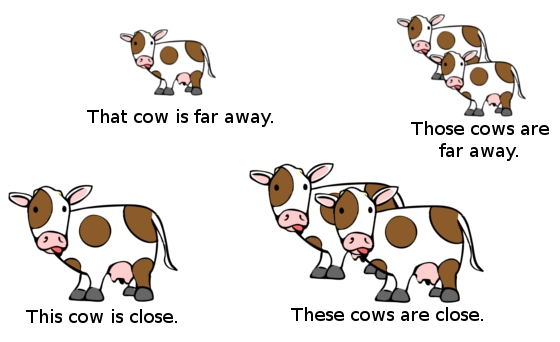- 3-minute read
- 17th January 2015
A Quick Guide to Determiners
Determiners are always accompanied by a noun and help us specify what we’re referring to (i.e. they determine what we are writing or speaking about). There are several types of determiner, including:
- Articles (i.e. the, a, an)
- Demonstratives (i.e. this, that, these, those)
- Possessive determiners (i.e. your, my, his, her, its, their, our)
- Quantifiers (e.g. many, few, some, all)
Herein, we will go through each of these in turn and explain how they should be used. Read on to make sure that you are using these words correctly!
Articles
Articles can be definite (‘the’) or indefinite (‘a/an’). We use the definite article to specify a particular instance of a noun: e.g. ‘the truck’ refers to a specific truck.
Indefinite articles, meanwhile, refer to a noun generically: e.g. ‘a bowl’ could be any bowl rather than one particular bowl. When using this article, though, make sure to:
- Use ‘a’ before nouns that start with a consonant sound (e.g. a book, a union)
- Use ‘an’ before nouns that start with a vowel sound (e.g. an egg, an hour)
Remember, too, that it is the sound at the start of a word that makes the difference, not the letter itself (e.g. ‘a union’ is correct before ‘union’ starts with a ‘y’ sound).
Possessive Adjectives
Possessive determiners – or possessive adjectives – tell us who or what owns or possesses a noun. In English, the words we use to do this in various cases are ‘your’, ‘my’, ‘his’, ‘her’, ‘its’, ‘their’, ‘our’, and ‘whose’.
If someone says ‘my shoes’, for instance, ‘my’ tells us who the shoes belong to.
Demonstrative Determiners
Demonstrative determiners – also known as demonstrative adjectives – indicate a relationship between the speaker and a noun. Like the definite article, they show us when a noun refers to a specific thing. However, these words are even more specific, as they work a bit like pointing at an item in real life.
The four demonstratives in English are ‘this’, ‘that’, ‘these’ and ‘those’. The correct term to use will depend on proximity (i.e. how close or far away something is). This is most evident with physical distances, but the same can apply to figurate distances.
The other key factor is whether the term being modified is singular or plural:
Singular | Plural | |
Close | This hat fits well! This year will be a good one. | These cookies taste great. I never go out these days. |
Far Away | That hat is an awful colour. I won’t be available at that time. | Those cookies look burned. Those methods are outdated. |
For example, if someone says ‘this hat’, we know they mean ‘the hat right here’. If they said ‘that hat’, by comparison, we’d know they mean a hat further away.
Find this useful?
Subscribe to our newsletter and get writing tips from our editors straight to your inbox.

Quantifiers and Numbers
Quantifiers are words that tell us how much of something there is. Common examples include words like ‘all’, ‘some’, ‘many’, ‘few’, ‘any’, and ‘several’:
I have many friends in Germany.
There are some holes in your socks.
All proofreaders need to know grammar.
Numbers can also be quantifiers, telling us how many of something there is:
She has two large dogs at home.
He read 153 books last year.
Numbers only count as quantifiers when they appear before a noun, though.
Proofreading for Grammar
Determiners can be tricky little words to master! But our editors are grammar and spelling experts, helping you to ensure your writing is always error free. Sign up for a free proofreading trial today and find out how our services work.